Border Abolitionism as Method: Engaging with Counter-archives of Resistance in and against Europe’s Detention Regime
From the Series: Relating, Refusing, and Archiving Otherwise
From the Series: Relating, Refusing, and Archiving Otherwise
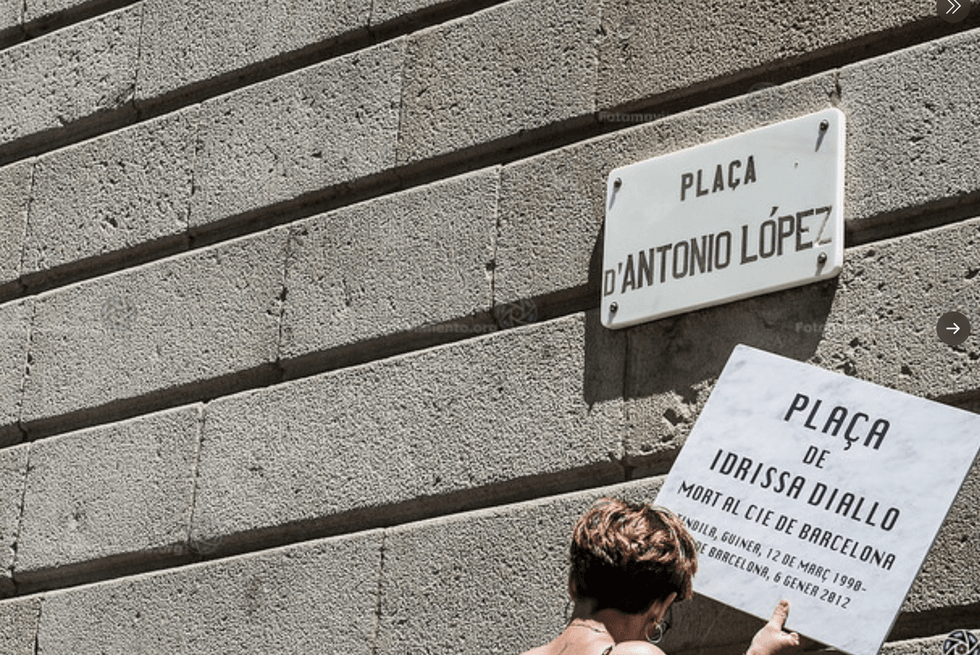
In October of 2023, I participated in a colloquium on prisons, inequality, and carceral power hosted at the University of Amsterdam. My colleague, Arantxa Ortiz, and I organized a panel on abolitionist research and the carceral continuum, reflecting on one of the primary interests of our own work. In preparation, I delved into a variety of questions relevant not just for my presentation, but above all, for my own research: What does it mean to conceive of academic research as an abolitionist praxis? How does this relate to the practices and imaginaries we encounter in abolitionist organizing throughout different sites? And how can (and should) an abolitionist stance problematize the relationships between research practice, policing, and grassroots forms of knowledge production in and against the European bordering regime?
Attempting to answer these questions, I began to dwell on a thought offered by Ruth Wilson Gilmore during an interview. Originating from one of abolitionism’s most prominent scholarly voices, this quote felt like a door opening. It was not a definition, but an invitation for a particular way of thinking, and, most importantly, being-with others. For Ruth Gilmore “abolition is not absence, it is presence. What the world will become already exists in fragments and pieces, experiments and possibilities. So those who feel in their gut deep anxiety that abolition means knock it all down, scorch the earth and start something new, let that go. Abolition is building the future from the present, in all of the ways we can.”
What the world will become already exists in fragments and pieces, experiments and possibilities.
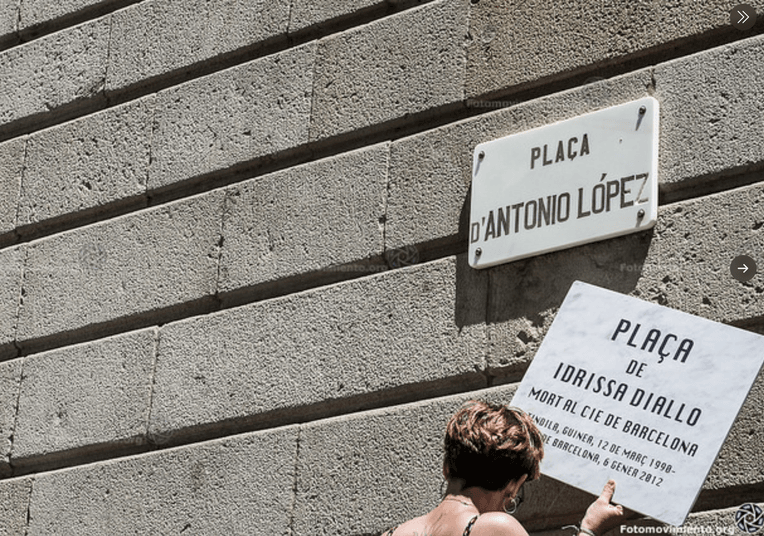
This, in particular, resonates deeply with my work. The PhD project I have been crafting and working on for almost two years now explores different histories of resistance in and against Europe’s detention regime—with a particular focus in the United Kingdom and Spain. To do this I engage with what I call the counter-archives of resistance. These are fragmented, cross-border, decentralized, and often also non-recorded accounts and experiences of being in and against immigration detention, which consists of detaining people subject to immigration control while they await deportation to their country of citizenship. Thanks to decades of work from researchers, journalists, organizers, and former detainees, we now know that the detention regime is not only complicit in, but central to reproducing practices of state violence and systemic racism which extend the colonial continuum into the present and propel it unto the future. This involves everyday forms of illegalization, criminalization, incarceration, and economic precarity for negatively racialized communities.
In the context of the violence of the bordering regime, my project tries to stay with different moments of resistance, to think with them, to think through them. And, as Rosalba Icaza and Rolando Vázques (2013) suggest, to view social struggles as epistemic struggles. To suggest this is to ask if these constitute moments of what decolonial scholar Walter Mignolo (2000) calls “border thinking;” ways of thinking, being, and organizing at the margins of the colonial continuum. Or, to rephrase, at the borderscapes that the detention regime traces through carceral facilities, urban spaces, and sites of transit.
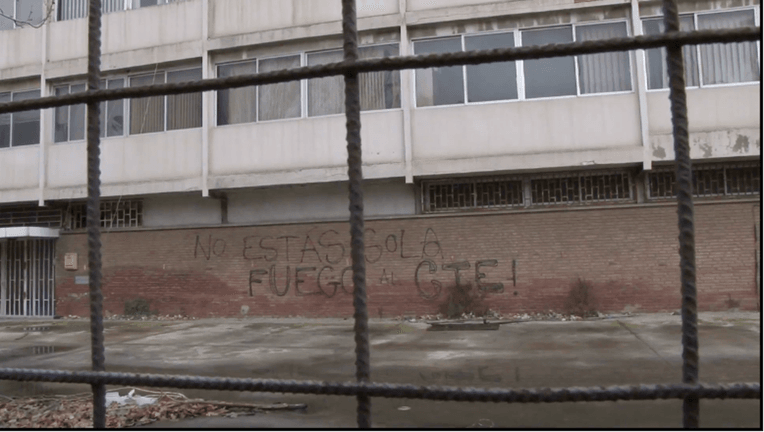
To think through and with resistance, its tensions and contradictions, is, I argue, an abolitionist approach. What the world will become already exists in fragments and pieces, experiments and possibilities. But to merely state this is not enough. Of course, when your work is inspired in overcoming historic and systemic oppression, nothing is ever enough—many of us know this to be true. But what makes work abolitionist, and most importantly, the possibilities that are brought forth from thinking of abolitionism as a research method, go to the core not just of a research topic but how we engage with our subject of study.
Luke De Noronha and Gracie Mae Bradley (2022), both scholars and activists based in the United Kingdom, suggest that border abolitionism entails two moments. The first is to increase our collective understanding of what borders ‘do.’ This means questioning the social, spatial, discursive, and affective arrangements which they produce—for my work, this means understanding detention centers as crucial to how bordering is enacted. Secondly, De Noronha and Bradley ask us to engage with ‘how the world could be otherwise’ by developing a sensibility and attentiveness to critical openings in the present. This requires us to be observant of the different imaginaries which emerge in particular moments, and, within their complicated and situated contexts, to inquire how images of a borderless abolitionist futurity may reveal themselves through the struggles of the present. What lies at the bottom of this is the insistence that borders are porous, that bordering as a practice of capture and coercion is always inevitably exceeded; something, someone, somewhere, somehow, refuses that capture. This does not erase the historical juncture between carcerality, illegalization, and criminalization that is the pillar of the colonial edifice. Instead, it is to argue that what the world will become already exists in fragments and pieces, experiments and possibilities.
While I find De Noronha and Bradley’s proposal for border abolitionist thinking seductive, I believe it requires stretching, extending, expanding. Following from the work of Ariella Aïsha Azoulay (2019), I want to propose that border abolitionism as a method, particularly when it comes to working with counter-archives, represents a practice of rehearsals in unlearning. Azoulay’s work proposes to unlearn imperialism via attending to the histories and ways of knowing and thinking which were destroyed and co-opted from the colonial project inaugurated in 1492. In doing so, she asks us to unlearn the ‘archive’ as a place which is instrumental in the imperial ‘order of things.’ I read the archive which Azoulay refers to here as the ordering and categorizing of the colonial gaze: the gaze of the state and its various policing and carceral institutions. It is the gaze which renders things knowable in order to either erase them or co-opt them. It is the aesthetic gesture that is characteristic of carcerality and bordering. That which renders the criminalization and racialization of some hyper-visible while invisibilizing both the violences that allow this and the histories of resistance against it.
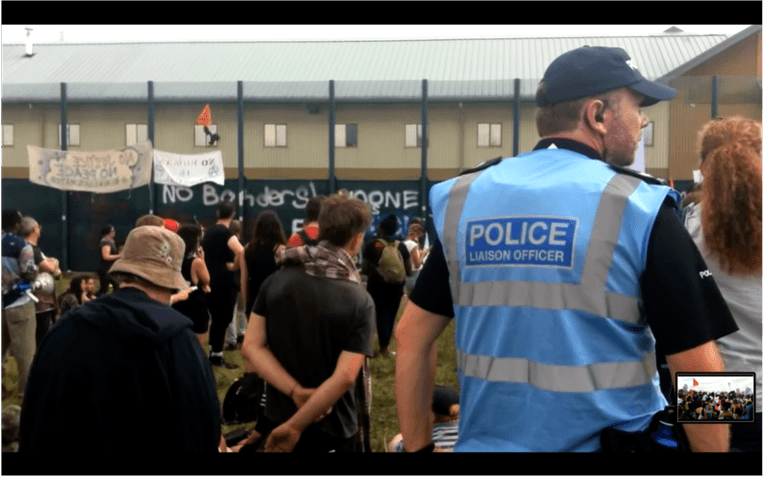
To unlearn, first of all, involves problematizing that gaze. To join Tanzil Chowdury, scholar and grassroots organizer, in asserting that “the violence of the imperial project is not a mere historical curiosity, nor did it only take place in a ‘distant land’; it shaped and continues to shape the technologies of British [European] state violence today” (Chowdury 2021, 85). To continue with Chowdhury, we can understand bordering and concomitantly “policing today, therefore, [as] a war against the poor and racialized, a continuing application of lessons learned in the colonies of empire” (2021, 93).
In my work, I understand counter-archives of resistance as both a site and a body of knowledge that rather than asking us to learn about bordering and the colonial continuum asks us to unlearn. To unlearn the colonial gaze by problematizing the historical conditions for its reproduction becomes central, I argue, to thinking of border abolitionism as a method. But this gaze is also a question of relationality. At its core, I sustain that abolitionism, at the junction of research and political praxis, is a question of how one relates to others in a world of asymmetrical power relations imbued in histories of racial capitalism, border imperialism, and colonial extractivism. For this reason, I find it valuable to return to Azoulay, for whom unlearning imperialism is a question of being with others in a non-imperial way, of finding companions and accomplices rather than simply objects of research and inquiry.
Challenging the boundaries between activism, political organizing, and scholarly research has long been the intent of those working within critical migration and borders approaches. My own work is both inspired by and indebted to this approach. Through my project, I try to contribute to and stretch these via a decolonial sensibility that takes as a starting point the intricately intertwined relation between coloniality and bordering, the imperial and the spatial. More recently, my engagement with counter-archives has led to various relevant questions: How does one relate to others who want to remain elusive, who want to refuse being rendered knowable by the state and the bordering regime? How can we become complicit in that refusal, and, by doing that, rehearse a form of unlearning? Or, to put it in the words of Martinican philosopher Édouard Glissant (1997), how can we uphold the “right to opacity for everyone”?

For Glissant, to think through opacity allows us to destabilize a conception of understanding based on a strong delineation between what is invisible and what is visible—ultimately, what is rendered ‘transparent’ for the colonial gaze. Transparency, for Glissant, is a necessarily reductive gesture at the heart of Western-centric conceptions of understanding. To render something knowable, to make it transparent, we must reduce it, narrow it. It is this gesture that allows us to grasp it, to grab it, to capture it. The colonial gaze, in its quest for transparency, and inevitably, reduction, lays the ground for a relationality characterized by extraction. This extraction may inevitably reproduce the apparatus of capture distinctive of carcerality and bordering regimes. Opacity, however, stays with an ‘other’ which cannot be rendered transparent, meaning understanding is not a question for grasping, for bringing some-thing, some-one back unto oneself, but of “giving-on-and-with.” This is marked by reciprocal exchange and a generous hermeneutic which does not seek knowledge in order to extract, control, and possess but, instead, to nurture a relationality of deep ethics and horizontality. As Glissant writes, “opacities can coexist and converge, weaving fabrics. To understand these truly one must focus on the texture of the weave and not on the nature of its components” (1997, 190). Thinking through opacity asks us to pay attention to the way that relations are woven. In the context of the counter-archive, it asks us how to be with an ‘other’ in resistance; an ‘other’ with whom we are entangled in power relations who seeks to escape the colonial and bordering regime gazes and calls not for reduction, but for complicity.
Border abolitionism as a method might feel like an inescapably incomplete enterprise. One which, as I suggest, calls for a form of unlearning asking us to problematize the conditions for the operation of the colonial gaze, thereby questioning how we relate to those who we study-with.
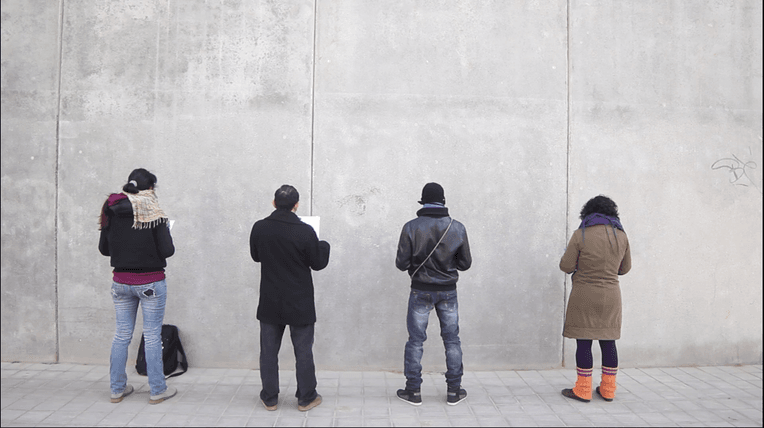
In the context of the colloquium in Amsterdam, many of us tried to think with and through the notion of ‘commoning justice.’ With the backdrop of border abolitionism as a method, ‘commoning justice’ may not be a state we arrive at, but a practice of being-with. It might mean to dwell on what that ‘common’ is—the “Undercommons” that Fred Moten and Stefano Harney (2013) write about, for example, or the “tradition of the oppressed” that Walter Benjamin (2005) suggests is the counter-archive of history otherwise. This common might return to the question of unlearning, of being-with traditions and histories of resistance and refusal, many of which historically have and continue to operate outside of or in tension with existing legal institutions. This, too, is the case with some of the abolitionist organizing in which some of us are involved. Perhaps what border abolitionism as a method can contribute to exercises toward the ‘commoning of justice’ is to remind us that what the world will become already exists in fragments and pieces, experiments and possibilities.
15Mbcn. 2013. “Sobren Raons.” January 4. Digital, 30:40 min.
Azoulay, Ariella Aïsha. 2019. Potential History: Unlearning Imperialism. New York: Verso.
Benjamin, Walter. 2005. “Theses on the Philosophy of History.” In Illuminations, edited by Hannah Arendt and translated by Harry Zohn, 253–6. New York: Schocken Books.
Bradley, Gracie Mae, and Luke de Noronha. 2022. Against Borders: The Case for Abolition. New York: Verso.
Chowdhury, Tanzil. 2021 “From the Colony to the Metropole: Race, Policing, and the Colonial Boomerang.” In Abolishing the Police, edited by Koshka Duff, 85–93. London: Dog Section Press.
Glissant, Édouard. 1997. “For Opacity.” In Poetics of Relation, translated by Betsy Wing, 189–95. Ann Arbor: University of Michigan Press.
Harney, Stefano, and Fred Moten. 2013. The Undercommons: Fugitive Planning & Black Study. New York: Minor Compositions.
Icaza, Rosalba, and Rolando Vázquez. 2013. “Social Struggles as Epistemic Struggles.” Development and Change 44, no. 3: 683–704.
McGuirk, Siobhán. 2015. “Shut Down Yarl's Wood.” Red Pepper. August 9. Digital, 7:46 min.
Medina, Alicia. 2017. “La Puerta Azul.” Diodo Media. Digital, 56 minutes.
Mignolo, Walter D. 2012. Local Histories/Global Designs: Coloniality, Subaltern Knowledges, and Border Thinking. Princeton, N.J.: Princeton University Press.
Tanquem els CIE! 2022. “Aquest és l'Idrissa Diallo.” X. March 24.